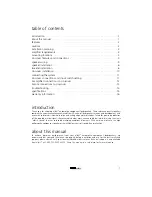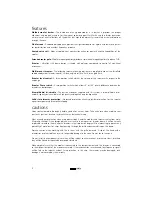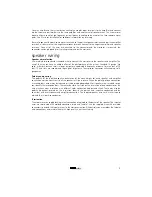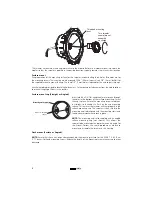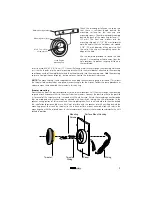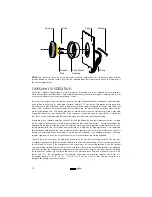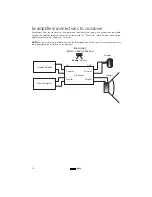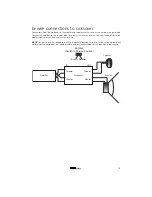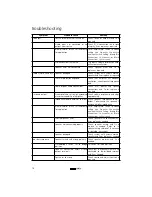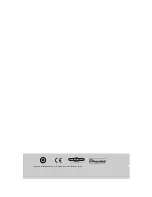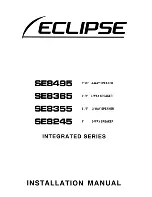
When removing or installing the grilles, be careful not to brush the woofer's rubber surround or the
tweeter's dome with the edge of the grille. Cutting or tearing the surround or dome will destroy the unit.
Never run wires outside or beneath the vehicle where they can be snagged by road hazards or the moving
parts of the vehicle. Use existing wire channels, sills, panels and molding strips inside the automobile to
hide the wiring for neat appearance and safety.
Make sure your radio/cassette/cd player and or other equipment is turned off while connecting the
speaker terminals. Turn on the various components and slowly advance the volume control ONLY after
checking and double checking all connections.
NOTE:
If the sound is weak or distorted, immediately turn down the volume and see the section entitled
Troubleshooting
.
installation planning
Proper installation planning is the best way to maximize performance. By planning your installation
carefully you can avoid situations where the performance or reliability of your system is compromised.
Your authorized a/d/s/
®
dealer or a/d/s/
®
audio technical support at 1-800-753-0800 x2033 has been
trained to know how to maximize your speakers sonic potential. They are a valuable resource in helping
you with your system design and installation.
amplifier requirements
This speaker system requires a minimum of 45 watts per channel to achieve reasonable listening volumes
in a moving automobile without clipping the amplifier. a/d/s/
®
recommends 150 watts per channel as a
maximum so as not to exceed the thermal or mechanical limitations of the speaker system. Any amplifier
between 45 watts and 150 watts may be used. If you choose to use an amplifier with more than 150
watts use caution as speaker damage may occur at high volume settings. All a/d/s/
®
loudspeakers will
produce reasonable volume levels in the automotive environment using moderate amplifier power.
However, the use of a low powered amplifier to try and attain very high volume levels can lead to
overdriving the amplifier and damaging the speaker system. As a rule, do not turn the volume up above
the point where you hear distortion on musical peaks from either an overdriven amplifier or mechanical
noise from an overstressed speaker. For the best performance and reliability; select an amplifier with
slightly more than the maximum power you are likely to need to generate the desired volume levels. This
margin of reserve power will ensure that the amplifier will not be routinely driven beyond its design limits.
WARNING:
Excessive sound pressure level can permanently damage your hearing. The maximum volume
levels attainable with a/d/s/
®
speakers, combined with high-power amplification, may exceed safe levels
of extended listening.
mounting locations
There are many possible choices of mounting locations. The vehicle factory locations will usually dictate
the woofer mounting position. Because of its small size and multiple mounting options, the tweeter can
virtually go anywhere. a/d/s/
®
uses an unusually low crossover frequency for the tweeter which means you
are not restricted to mounting the tweeter close to the midrange speaker. The tweeter can be mounted
as far as 24" (60 cm) from the midrange speaker without causing adverse effects on the sound quality.
However, better results are usually obtained by locating the tweeters and midranges relatively close to
each other, and by keeping the sound path lengths between the listener and the left and right speakers
as equal as possible.
a/d/s/
®
cannot recommend specific tweeter mounting locations for each vehicle, but in general try to keep
the tweeters as far to the sides of the car as practical. Avoid placing them above ear level unless the
woofers are also above ear level. Place the tweeters in similar locations on both sides of the vehicle. Try a
few locations by just placing the tweeter or taping it in a location and listening to ensure the desired
stereo image and high frequency dispersion are achieved before committing to a location by drilling holes
in the vehicle. You should also experiment with the tweeter phase switch settings to find the most
effective combination of location and phase.
3


